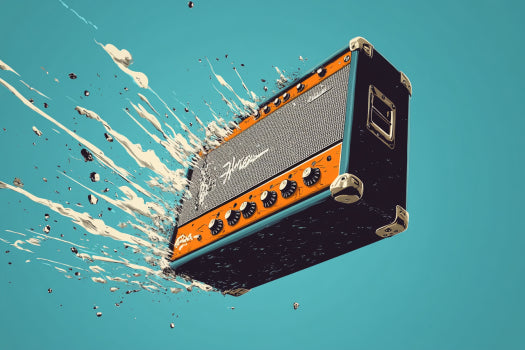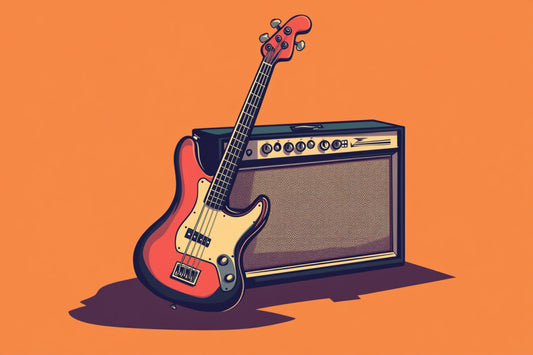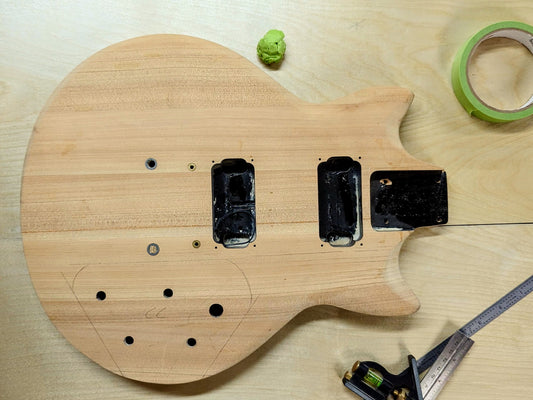
If you’ve ever had to lug your gear around for rehearsals, gigs, or recording sessions, you’ve probably wondered: "Is it okay to transport my guitar amp on its back?" It’s a common question among guitarists, bassists, and really any musician with amps and speakers. Amplifiers aren’t exactly featherweights, and the temptation to just lay them flat for a smoother ride is real. But is it safe?
In this article, we’ll break down the potential risks and best practices to ensure your amp survives the journey unscathed.
Understanding the Anatomy of an Amplifier
To understand whether it’s safe to transport an amp on its back, it helps to know what’s inside these beasts. Amps—whether for guitar, bass, or other uses—are made up of delicate components, including speakers, transformers, and if you’ve got a tube amp, well, tubes (surprise!).
- Tube Amps vs. Solid-State Amps: Tube amps have glass tubes that glow like little light bulbs. They’re responsible for that warm, vintage tone we all love, but they’re also fragile. Solid-state amps, on the other hand, don’t have tubes, so they’re generally tougher and less prone to damage.
- Weight Distribution: Amplifiers are usually designed to sit upright, where the weight of heavy components like transformers is balanced. Laying it on its back can cause this weight to shift in ways the amp wasn’t designed for, leading to potential damage.
Now, this doesn’t mean your amp is a delicate flower that can’t be moved, but it does mean you should take precautions.
The Risks of Transporting an Amp on Its Back
Here’s where things can get tricky. Transporting an amp on its back can be risky for a few reasons, depending on the type of amp you own.
1. Tube Amps: Tubes are the most vulnerable component in this equation. They’re mounted vertically inside the amp when it’s upright. When you lay a tube amp on its back, any rough bumps in the road can jostle these tubes, increasing the risk of them getting dislodged or even cracked. And replacing tubes isn’t cheap, not to mention the frustration of poor tone if they get damaged.
2. Speakers: The speakers inside your amp are another concern. Laying an amp on its back can put pressure on the speaker cones, and over time, this can lead to cone shifting. Plus, the magnets that drive the speakers are heavy, and if they’re not properly supported, they can start moving out of alignment.
3. Internal Components: Beyond tubes and speakers, the internals of an amp include circuit boards and wiring, which can become loose or misaligned if subjected to a lot of movement. Laying your amp flat might increase the chance of components coming loose over time, especially if the amp isn’t padded or secured.
Is It Ever Okay to Transport Your Amp on Its Back?
So, is it always a bad idea to transport your amp on its back? Not necessarily. If you’re just driving a short distance, and the amp is well-padded or packed, you might get away with it. Short trips with minimal jostling generally don’t cause much harm, especially if you have a solid-state amp.
But what really matters is how well your amp is secured. If you’ve wrapped it in blankets, foam, or a protective case, the risk of damage goes down significantly. It’s also worth noting that laying the amp on its side is typically safer than laying it flat on its back, as this still allows for better weight distribution.
When in doubt, try to keep your amp upright, even if it means taking a little extra time to pack or secure it in your vehicle.
Best Practices for Amp Transportation
Here’s how you can keep your amp safe, whether it’s a guitar amp, bass amp, or speaker cab:
- Always Use Padding: No matter how far you’re transporting your amp, padding is your best friend. Wrap it in blankets, use foam padding, or invest in a hard case to absorb shocks and prevent any damage to the internal components.
- Transport Upright: As mentioned earlier, keeping the amp in its natural, upright position is the safest bet. It helps maintain the proper weight distribution and keeps components, like tubes and speakers, in place.
- Use an Amp Dolly: Handy for transportation, a dolly is great for larger amps or bass cabs, allowing you to keep everything upright without breaking your back.
- Bass Amps: Bass amps tend to be a bit more rugged, as they’re often built to handle heavier low-end frequencies. However, they still have components that can get damaged if not transported carefully, so the same rules apply—keep them upright when possible.
Conclusion
At the end of the day, transporting your amp on its back isn’t the worst thing in the world, but it’s not the best idea either. For short trips, with plenty of padding, you’re probably fine. But for longer trips or frequent moves, it’s smarter to transport your amp upright to protect those delicate tubes, speakers, and internal components.As with most things in life (and music), a little extra care goes a long way. Treat your amp like the prized gear it is, and it’ll keep delivering sweet tone for years to come!






